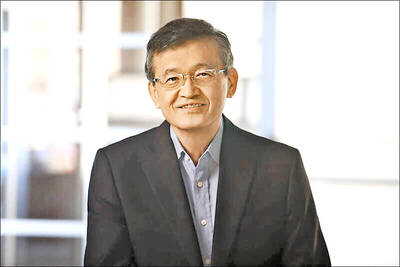Lite-On Technology Corp (光寶科技) officially opened its US$600 million eastern Chinese headquarters in Changzhou, Jiangsu Province, yesterday as part of the company’s efforts to branch out into the green energy business.
The regional headquarters, located in the Wujin High-tech Development Zone (武進高新技術區), will help Lite-On Technology integrate its supply chain resources in Eastern China while improving its operational efficiencies, the Neihu-based company said in an e-mailed statement.
Lite-On Technology also hopes the new regional headquarters will help it expand into the green energy industry, leveraging its position in the global information and communication technology industries, the statement said.
Yesterday’s announcement came after Lite-On Technology said last week it was considering acquiring silicon wafer makers to develop its solar cell business, while its solar subsidiary, Lite-On Green Technologies Inc (光寶綠色能資), sealed a deal to install 2-megawatt roof-based photovoltaic systems in Belgium for the IKEA Group, the world’s biggest home-furnishings retailer.
The company, which posted a 0.4 percent decline year-on-year in net profit to NT$2 billion (US$62 million) in the first half of the year amid the economic slump, counts on electronic devices and optoelectronic components as its major revenue generators. These include switching power supply products, light-emitting-diode (LED) backlighting for notebooks and PC monitors, as well as handset casing and keyboard products.
The company claims its power supplies and LED products could save 2.88 billion kilowatt hours (kwh) and reduce carbon dioxide emissions by 2.74 million tonnes per year, which is the equivalent of preventing 152,431 hectares of deforestation. These benefits are the result of energy-saving designs in the company’s plants and manufacturing processes, it said.
With its increased business focus on solar energy, Lite-On Technology has now jumped onto the green energy bandwagon, along with other local industry heavyweights like Taiwan Semiconductor Manufacturing Co (台積電), United Microelectronics Corp (聯電) and AU Optronics Corp (友達光電).
At its new facilities in the Wujin High-tech Development Zone, Lite-On Technology will initially focus on the manufacturing of power supply products, before extending to the production of keyboard, PC peripherals and LED products in the future, the statement said. The company currently has 14 production lines running there and the figure is projected to increase to 40 lines by the end of the year, it said.
Shares of Lite-On Technology have surged 89.04 percent so far this year, outperforming a rise of 70.2 percent on the main bourse’s electronics sub-index and an increase of 59.98 percent on the TAIEX.
The stock ended at NT$40.55 on the Taiwan Stock Exchange on Friday.

Intel Corp chief executive officer Lip-Bu Tan (陳立武) is expected to meet with Taiwanese suppliers next month in conjunction with the opening of the Computex Taipei trade show, supply chain sources said on Monday. The visit, the first for Tan to Taiwan since assuming his new post last month, would be aimed at enhancing Intel’s ties with suppliers in Taiwan as he attempts to help turn around the struggling US chipmaker, the sources said. Tan is to hold a banquet to celebrate Intel’s 40-year presence in Taiwan before Computex opens on May 20 and invite dozens of Taiwanese suppliers to exchange views

Application-specific integrated circuit designer Faraday Technology Corp (智原) yesterday said that although revenue this quarter would decline 30 percent from last quarter, it retained its full-year forecast of revenue growth of 100 percent. The company attributed the quarterly drop to a slowdown in customers’ production of chips using Faraday’s advanced packaging technology. The company is still confident about its revenue growth this year, given its strong “design-win” — or the projects it won to help customers design their chips, Faraday president Steve Wang (王國雍) told an online earnings conference. “The design-win this year is better than we expected. We believe we will win

Chizuko Kimura has become the first female sushi chef in the world to win a Michelin star, fulfilling a promise she made to her dying husband to continue his legacy. The 54-year-old Japanese chef regained the Michelin star her late husband, Shunei Kimura, won three years ago for their Sushi Shunei restaurant in Paris. For Shunei Kimura, the star was a dream come true. However, the joy was short-lived. He died from cancer just three months later in June 2022. He was 65. The following year, the restaurant in the heart of Montmartre lost its star rating. Chizuko Kimura insisted that the new star is still down

While China’s leaders use their economic and political might to fight US President Donald Trump’s trade war “to the end,” its army of social media soldiers are embarking on a more humorous campaign online. Trump’s tariff blitz has seen Washington and Beijing impose eye-watering duties on imports from the other, fanning a standoff between the economic superpowers that has sparked global recession fears and sent markets into a tailspin. Trump says his policy is a response to years of being “ripped off” by other countries and aims to bring manufacturing to the US, forcing companies to employ US workers. However, China’s online warriors